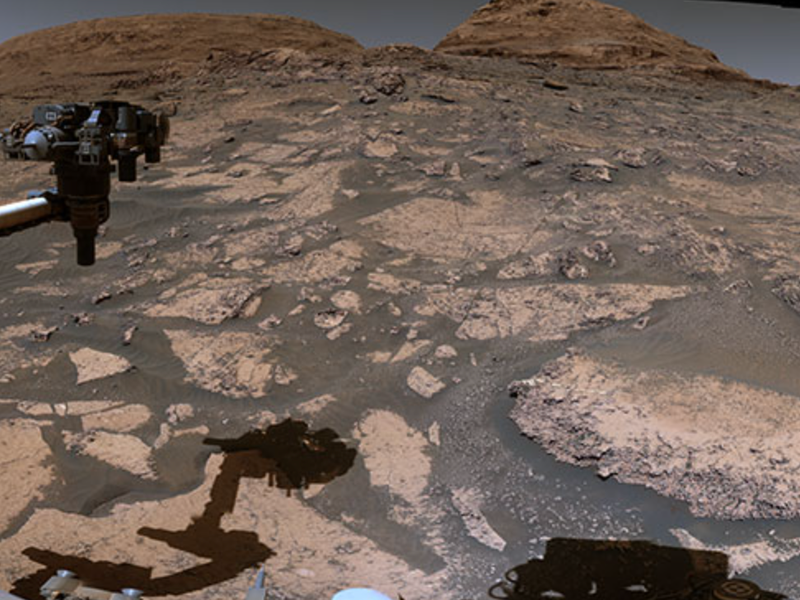
A piece of sediment discovered by NASA’s Curiosity Rover earlier this month contained carbon — a possible trace of ancient life on Mars.
The Curiosity Rover has been analyzing Mars’ surface for the past decade, exploring the Gale Crater, a formation that was the site of a body of water three billion years ago. It was there that the rover found deposits of sediments that contained carbon isotopes.
There are two types of carbon isotopes that are typically found in nature — carbon-12, and carbon-13. The Curiosity team found a far greater amount of carbon-12, the lighter of the two isotopes, forming weaker chemical bonds and is subject to chemical reactions at an accelerated rate compared to carbon-13. The latter quality makes carbon-12 more common across biological compounds.
Curiosity has also found elevated levels of methane in Mars’ atmosphere. The team speculates that this methane gas may have been released from subsurface reservoirs. But the source of the methane is far from agreed upon. Its also been suggested that the gas is the product of chemical reactions between different minerals, carbon dioxide, and water.
Mars’ methane and carbon could be directly linked: some scientists have suggested a scenario where microbes consumed the gas and deposited its carbon into the planet’s sediments. But researchers have yet to find direct evidence of such a process.
Why carbon on Mars points to life
Carbon is a tell-tale sign of much bigger life processes, as carbon is the building block of organisms and goes through its own carbon cycle to recycle atoms everywhere in the environment on Earth. Carbon moves from the atmosphere to the ground and then back to the atmosphere. Thus, researchers can use carbon atoms to trace a larger story of ancient life on Mars.
The Curiosity Rover first touched down on the Gale Crater on Mars in August 2021. The crater, which is 96 miles long, was created by a meteor that struck Mars’ surface roughly 3.5 billion to 3.8 billion years ago. The crater is believed to have once been a lake.
Curiosity drilled into the sediment of the Gale Crater between August 2021 and July 2021. The rover then heated those samples to 1,562 degrees Fahrenheit, and the elements contained in the samples separated, releasing the carbon atoms.
“The samples extremely depleted in carbon 13 are a little like samples from Australia taken from sediment that was 2.7 billion years old,” said Christopher H. House, lead study author and professor of geoscience at Pennsylvania State University, in a statement.
“Those samples were caused by biological activity when methane was consumed by ancient microbial mats, but we can’t necessarily say that on Mars because it’s a planet that may have formed out of different materials and processes than Earth.”
See all the latest news from Greece and the world at Greekreporter.com. Contact our newsroom to report an update or send your story, photos and videos. Follow GR on Google News and subscribe here to our daily email!



